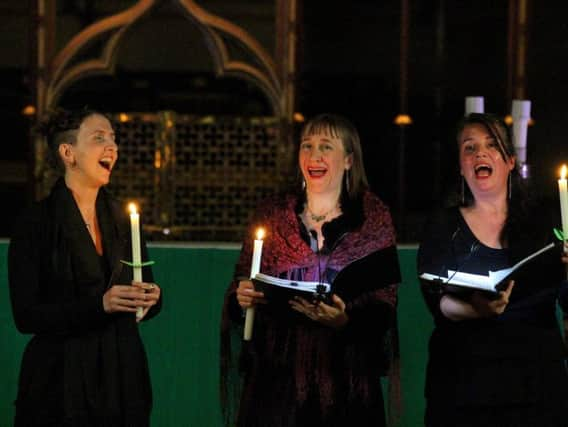Reviews from the Brighton Early Music Festival


A concert of ancient songs themed on the symbolism of two flowers, the lily with its purity and brightness, the rose representing love, evidently seems not to be the kind of event into which male performers uninhibitedly unloose their talents and interpretations.
Women like these three from The Telling, two English, one German, had no such admittedly hypothetical hesitation, even though almost all the florally inflected words were written by men. Although, how frequently do female song lyrics extol a man in such imagery?
Advertisement
Hide AdAdvertisement
Hide AdThe deep, spacious church is candlelit. All the texts in their glory are in the programme. As the audience hushes, the artistes enter through the dark from the back, singing a capella, and exit likewise at the end.
One song, the first of three by Hildegarde of Bingen, the now familiar 12th Century abbess, is sung by mezzo Ariane Prüssner as she walks slowly around the perimeter of the nave. “ . . . your eyes should never yield until you might see my body full of buds.” These three female songs, pointedly placed or not, were the evening’s last words.
Leah Stuttard’s 13th Century replica harp, not ever present in accompaniment, but twice in a solo role, casts its inevitable spell in the flickering atmosphere. There was a sometimes bewildering fascination how her music often moved along its own furrow of line or harmony in complementary counterpoint to the vocalists. A far a cry from the simple, faithfully-following pop or blues accompaniments of the last 65 years.
Stuttard’s own is an occasional third voice, in either harmony or drone. Real fragrance or incense are absent, not there to smell, but they are heard, sometimes substantially, sometimes elusively, in the two importantly contrasting main female voices’ inherent sensuality and their singers’ own artistry.
Advertisement
Hide Ad